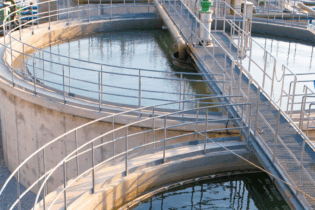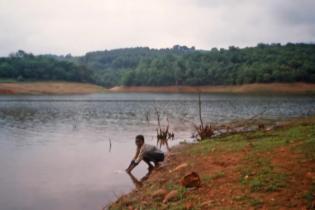Although a key player in boosting the local economy, mining remains a huge consumer of water. IMIESA takes a look at the Olifants River Water Resources Development Project, which will not only meet the requirements of new mining developments in Limpopo but willalso provide much-needed relief to local communities.
Commissioned by the Department of Water Affairs and with support from the Trans-Caledon Tunnel Authority (TCTA), the Olifants River Water Resources Development Project (ORWRDP) is currently in Phase 2 stage (A – I) and involves the development of additional water resource infrastructure in the middle parts of the Olifants water management area. Phase 1 saw the raising of the Flag Boshielo dam by 5 m and was successfully completed. Phase 2A is now on the cards, which involves the construction of the De Hoop dam – a bulk water storage facility that will augment the current water supply around the Steelpoort and Olifants rivers. Located in the Olifants River catchment area and expected to be on the 13th largest dam in the country, De Hoop is a massive undertaking with a 347 million cubic metre reservoir capacity – incorporating the Steelpoort River catchment area and extending into the Mogalakwena and Sand River catchments. Engineering featAwarded in February 2012, Phase 2 of the project consists of four major components, namely, bulk water pipeline from De Hoop to Steelpoort; bulk distribution system comprising pipelines and pump stations from Steelpoort linking with the existing Olifants-Sand Transfer Scheme; bulk distribution system from the Flag Boshielo dam to Mokopane; and acquisition of the Lebalelo Water User Association infrastructure for incorporation into the project. A bulk distribution system means that the Flag Boshielo and De Hoop dams will be able to function as a single system, thereby enabling a higher water supply level. Aurecon/Ndodana Joint Venture (ANJV) has been appointed engineering consultants on the project while Basil Read has been made the construction contractor.
As with any project of this magnitude, challenges are inevitable. ORWRDP experienced delays due to funding and institutional setbacks. Inadequate regional and municipal infrastructure was also a challenge, with the project team having to work around these hurdles. ANJV’s scope of work included a 70 km, 1 100 mm diameter pumping main from the Flag Boshielo dam to the town of Mokopane, for which three pump stations of 4 MW each were required. They were also tasked with the extraction and distribution of water from De Hoop dam to several end points through pipelines ranging from 1 700 mm to 1 000 mm in diameter. A 13 MW pump station was needed along the pipeline and, to conserve energy, the pump station is linked directly to the dam by a 40 km long suction main. This segment of the project also makes use of fibre optic cables, linking all elements to a single remote control centre that monitors and controls developments. ORWRDP forms part of the Presidency’s 18 strategic integrated projects (SIPs), which aims to speed up development and growth across South Africa through job creation and basic service delivery. Upon completion, the project will link the De Hoop and Flag Boshielo dams, and will carry bulk water to Steelpoort’s mines, surrounding communities and the Lebalelo Bulk Water Scheme.







